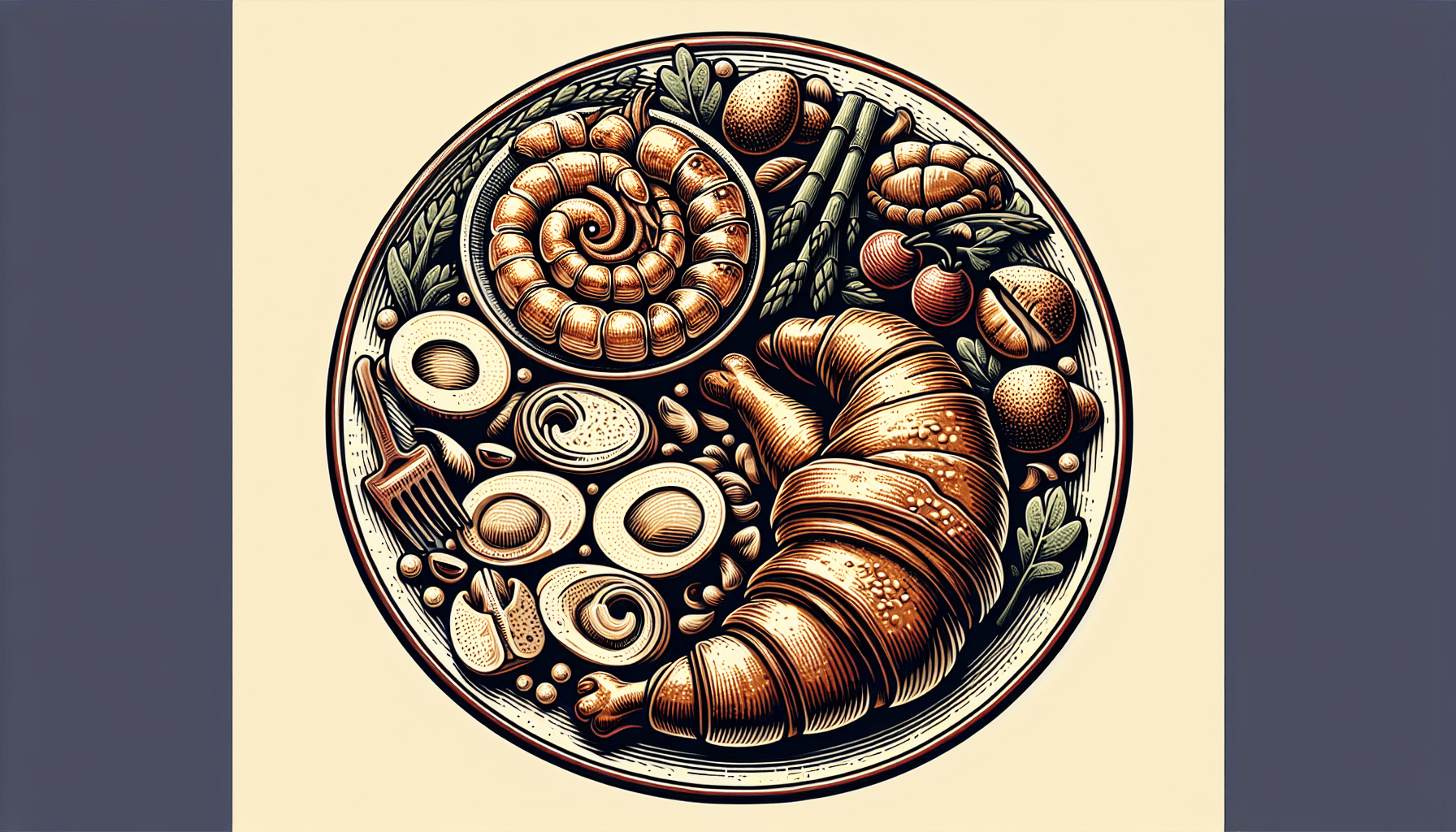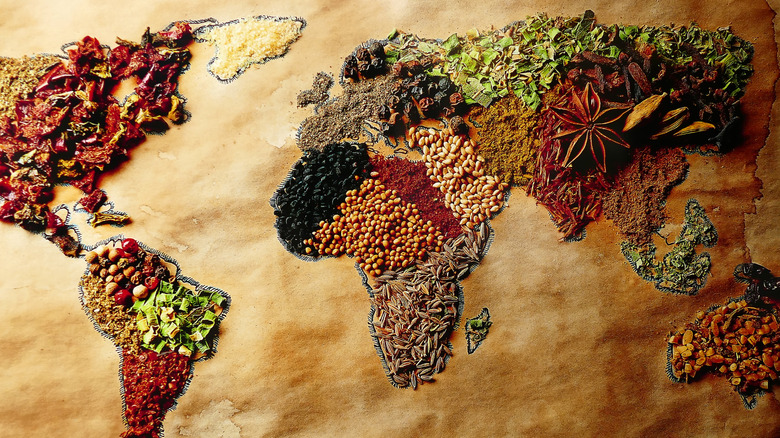Etekcity Luggage Scale for Travel Essentials, Digital Suitcase Weight Scale with Hook, Travel Accessories for Portable Hanging Baggage, 110 Pounds, Battery Included
$8.99 (as of March 18, 2025 23:53 GMT +00:00 - More info)French cuisine is renowned worldwide for its elegance, sophistication, and rich heritage. To fully appreciate and navigate a French menu, it is essential to have some familiarity with French culinary terms. A grasp of these words and phrases can help make informed choices and ensure a delightful dining experience. From understanding the various menu options, such as prix fixe and a la carte, to knowing the correct order of courses, French cuisine offers a world of flavors waiting to be explored. Whether it’s savoring a delightful amuse-bouche or indulging in a classic boeuf bourguignon, the essence of French cuisine lies in its attention to detail, respect for tradition, and the desire to create a memorable culinary journey.
Get an Official Zagat Restaurant Guide
Overview of French Cuisine
French cuisine is widely regarded as one of the most elegant and sophisticated culinary traditions in the world. It is characterized by its attention to detail, use of high-quality ingredients, and rich heritage. French cuisine has greatly influenced global culinary traditions, with many of its techniques and dishes being replicated and enjoyed worldwide.
One of the remarkable aspects of French cuisine is its regional diversity. Each region in France has its own distinct food culture and culinary specialties. From the rustic and hearty dishes of the countryside to the refined and delicate creations of Parisian haute cuisine, there is something for every palate in French cuisine.
Familiarizing with French Culinary Terms
Understanding French culinary terms is essential when navigating menus and making informed choices at French restaurants. These terms often describe the techniques used, the ingredients included, or the way a dish is prepared. Being familiar with these terms allows us to appreciate the nuances and subtleties of French cooking.
Some commonly used terms in French cuisine include “sauté,” which means to cook briefly in a small amount of fat over high heat, and “au gratin,” which refers to a dish that is topped with breadcrumbs or cheese and then browned in the oven. Another important term is “mise en place,” which signifies the preparation and organization of ingredients before cooking.
By understanding French culinary terms, we can have a deeper appreciation for the dishes we encounter and make informed choices that align with our preferences and dietary restrictions.

Get an Official Zagat Restaurant Guide
Important French Words and Phrases at a French Restaurant
When dining at a French restaurant, it is helpful to familiarize ourselves with important French words and phrases that are commonly used on menus or when interacting with the waitstaff. This knowledge can enhance our dining experience and allow us to confidently navigate the culinary offerings.
-
Menu: Understanding the different menu options is crucial. French menus typically feature a variety of choices, including à la carte, prix fixe, and menu dégustation.
-
Prix fixe: Exploring the fixed price menus, known as “prix fixe,” can be a delightful option. These menus offer a predetermined selection of courses at a set price, allowing us to experience a complete meal with a harmonious progression of flavors.
-
A la carte: Choosing dishes individually from the à la carte menu offers us the flexibility to tailor our dining experience to our preferences. This option allows us to mix and match dishes based on our taste and appetite.
-
Menu dégustation: For those seeking a truly immersive culinary experience, the menu dégustation, or tasting menu, is an excellent choice. This menu presents a series of smaller portions of carefully crafted dishes, allowing us to sample a range of flavors and culinary creations.
By understanding these key words and phrases, we can confidently explore the menu and make choices that align with our preferences and desired dining experience.
The Correct Order of Courses in French Dining
French dining is known for its adherence to a specific sequence of courses, each designed to build upon the previous one and create a harmonious dining experience. Understanding the correct order of courses allows us to fully appreciate the flavors and textures of each dish.
-
Entrée: In French cuisine, the term “entrée” refers to the starter course. This course typically consists of a small portion of a lighter dish, such as a salad, soup, or appetizer. The entrée prepares our palate and sets the tone for the meal ahead.
-
Amuse-bouche: Often presented as a small complimentary appetizer, an amuse-bouche is a taste of something delightful created by the chef. It serves to awaken our taste buds and provide a glimpse of the chef’s creativity.
-
Plat: The main course, referred to as “plat” in French dining, is the heart of the meal. It can feature a variety of dishes, including meat, poultry, fish, or vegetarian options. The plat showcases the chef’s skills and culinary expertise.
By following the correct order of courses, we can engage in a culinary journey that gradually builds in intensity and flavors, resulting in a truly memorable dining experience.

Aperitifs and Starters in French Cuisine
Before the main meal, French cuisine often includes aperitifs and starters to prepare the palate and awaken the appetite.
-
Aperitifs: Aperitifs are alcoholic beverages meant to stimulate the appetite and prepare us for the meal. Vermouth, Champagne, and Kir are popular choices as they offer a refreshing and light start to the dining experience.
-
Starters: French starters, known as “entrées,” come in a variety of options. They can range from simple salads to more elaborate appetizers like pâté or terrine. These starters showcase the flavors and textures that will be encountered throughout the meal.
French cuisine prides itself on the artistry and attention to detail in creating starters that are both visually appealing and delicious. They are intended to set the stage for the upcoming culinary journey.
Mains in French Cuisine
The main course, known as “plat” in French cuisine, is a showcase of culinary mastery and offers a wide range of options to suit various tastes and preferences.
-
Traditional main dishes: French cuisine is renowned for its traditional main dishes that have stood the test of time. From the hearty cassoulet, a slow-cooked casserole with meat and beans, to the delicate yet flavorful quiche Lorraine, these dishes embody the essence of French cooking.
-
Classic poultry choices: Poultry dishes hold a special place in French cuisine. Coq au vin, a dish of chicken braised in red wine, and duck confit, where duck is slowly cooked in its own fat, are popular choices that capture the rich flavors and textures associated with French cooking.
-
Well-known beef dishes: Beef plays a significant role in French cuisine, and there are several iconic beef dishes that have become synonymous with French cooking. Boeuf bourguignon, a slowly cooked beef stew with red wine, and steak frites, a classic combination of grilled steak and french fries, are perennial favorites.
Soups in French Cuisine
French cuisine offers a diverse range of soups that cater to various tastes and seasons.
-
Variety of soups: From comforting vegetable soups to rich and hearty meat-based creations, French cuisine offers a wide array of soup options. The choices are influenced by regional ingredients and culinary traditions.
-
Exploring cold soups: Cold soups like vichyssoise, a smooth and creamy potato and leek soup served chilled, are refreshing during the warmer months. These soups highlight the versatility and creativity of French cuisine.
-
Rich and flavorful soups: French cuisine is renowned for its rich and flavorful soups, such as bisque. Made from shellfish like lobster or crab, bisque showcases the depth of flavors that can be achieved through careful preparation and seasoning.
Fish Dishes in French Cuisine
French cuisine boasts an extensive repertoire of fish dishes that highlight the abundance of fresh seafood available in coastal regions.
-
Specific names for fish dishes: French cuisine often uses specific names to identify popular fish dishes. Sole meunière, a classic French dish of pan-fried sole fish with a buttery lemon sauce, is a prime example. Other notable fish dishes include bouillabaisse, a flavorful fish stew from Marseille, and moules marinières, mussels cooked in a white wine and garlic broth.
-
Famous fish options: French cuisine offers a variety of fish options, ranging from delicate white fish like cod and sea bass to more robust and flavorful varieties such as salmon and trout. These fish options cater to different taste preferences and allow for a diverse dining experience.
Desserts and Pastries in French Cuisine
No exploration of French cuisine would be complete without indulging in the wide array of desserts and pastries it offers.
-
Indulging in French desserts: French desserts are known for their elegance and decadence. From the light and creamy crème brûlée to the rich and indulgent chocolate mousse, each dessert is crafted with precision and finesse. These desserts are often the perfect ending to a memorable meal.
-
Iconic French pastries: France is celebrated for its pastries, and some have become synonymous with French culinary tradition. Croissants, with their buttery and flaky layers, and macarons, delicate almond meringue cookies with luscious fillings, are among the most iconic French pastries.
-
Famous French dessert choices: In addition to pastries, French cuisine offers a selection of famous desserts. Tarte Tatin, an upside-down caramelized apple tart, and crêpes suzette, thin pancakes flambéed with orange liquor, are both timeless classics that exemplify the artistry and creativity of French pastry chefs.
French Cheeses and Wine Pairings
French cuisine is renowned for its rich and diverse cheese culture. Understanding the wide variety of French cheeses and their ideal wine pairings can elevate our dining experience.
-
Exploring the wide variety of French cheeses: France is home to a vast array of cheeses, each with its distinct taste and texture. From creamy Camembert to tangy Roquefort, there is a cheese for every palate. Exploring the diverse range of French cheeses allows us to appreciate the craftsmanship and artistry that goes into their production.
-
Classic cheese and wine pairings: The French have perfected the art of cheese and wine pairings. From the sharp and robust flavors of blue cheese with a sweet dessert wine to the nutty and earthy notes of a Comté paired with a full-bodied red wine, understanding these pairings enhances the experience of savoring French cheeses.
-
The importance of cheese in French cuisine: Cheese holds a special place in French cuisine and is often enjoyed as a separate course following the main meal. It reflects the deep connection between the French people and their culinary heritage. Whether enjoyed on its own or as part of a cheeseboard, cheese is an integral part of the French dining experience.
French cuisine is a culinary journey that encompasses elegance, sophistication, and a rich heritage. By familiarizing ourselves with French culinary terms, understanding the order of courses, and appreciating the diversity of flavors, we can fully immerse ourselves in this extraordinary gastronomic tradition. Bon appétit!
Get an Official Zagat Restaurant Guide





